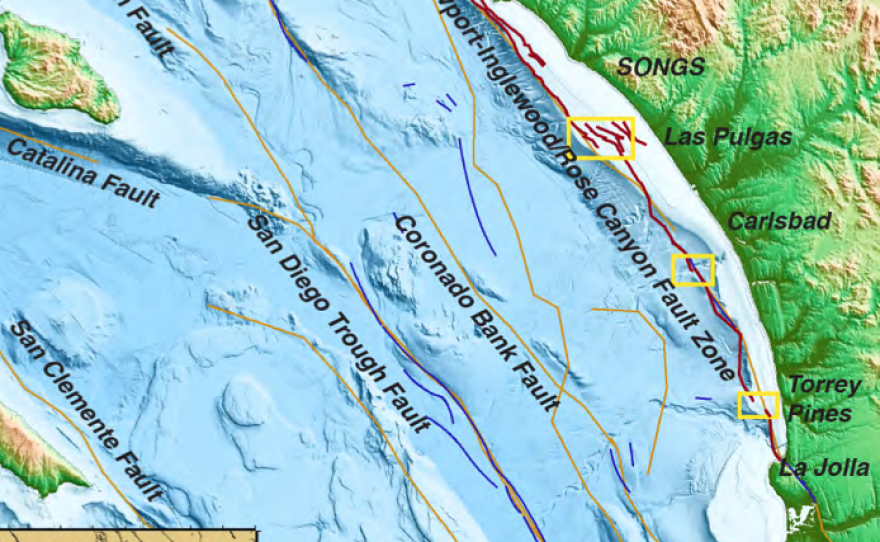San Diego’s most dangerous earthquake fault, which begins near Silver Strand State Beach, runs under the Coronado bridge and cuts through downtown San Diego before heading offshore at La Jolla, is connected to another significant fault that stretches to Los Angeles, a new study finds.
The Rose Canyon and Newport-Inglewood faults had been considered separate systems, but they are actually one continuous strike-slip fault made of four sections, said Neal Driscoll, professor of geology and geophysics at Scripps Institution of Oceanography.
Driscoll and his team recently mapped the seafloor and the layers beneath to study previous ruptures. They processed data from previous seismic surveys, and supplemented it with high-resolution underwater topography data gathered offshore by Scripps researchers between 2006 and 2009 along with seismic surveys conducted aboard Scripps research vessels in 2013.
"We’ve spent over 100 days out at sea, plus working in this region for the last decade or so," Driscoll said, pointing to data on one of several screens displayed on a wall at the La Jolla campus. "These layers are like tree rings. They tell us the history of the earth. We can see previous earthquakes and develop recurrence intervals."
The disparate data have different resolution scales and depth of penetration, which allowed Driscoll and the other scientists to define the fault architecture at an unprecedented scale and create magnitude estimates with more certainty.
Driscoll said the four fault sections are connected by what are called "stepovers" — points where the fault is horizontally offset.
"So what could happen is that the segments offshore, because the stepovers are small, that it could rupture end-to-end in the offshore segments," Driscoll said.
An offshore rupture could generate a magnitude 7.3 temblor, while a land-based quake could unleash a magnitude 7.4, Driscoll said.
RELATED: Seismic Research Explores San Onofre’s Earthquake, Tsunami Risks
The fault system most famously produced a 6.4-magnitude quake in Long Beach that killed 115 people in 1933.
Researchers have found evidence of earlier earthquakes of indeterminate size on onshore portions of the fault, finding that at the northern end of the fault system, there have been between three and five ruptures in the last 11,000 years. At the southern end, there is evidence of a quake that took place roughly 400 years ago and little significant activity for 5,000 years before that.
Driscoll said to get an idea of the impact of a magnitude 7.3 temblor, just go back to April 4, 2010 when a magnitude 7.2 struck near the border, 65 miles south of San Diego.
RELATED: San Diego Researcher Discovers New ‘Potentially Significant’ Earthquake Fault
"Many San Diegans will remember that day 'cause there was a lot of ground motion here," he said. "If we were closer, the ground motion gets larger and a magnitude 7.3 would be a significant event here."
Further study is needed to improve the understanding of the threat posed to urban areas between Tijuana and Los Angeles, Driscoll said.
Researchers at the Nevada Seismological Laboratory assisted with the study, which was funded by Southern California Edison.






